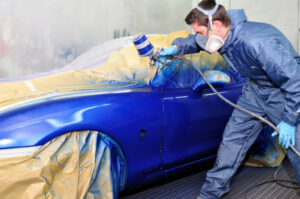Rotary Air Compressors in Your Automotive Shop May be Costing You Money

There has been a trend in recent years to promote the use of rotary compressed air in automotive care applications because reciprocating technology is perceived as “dated” while rotary is perceived as “cutting edge.” Rotary technology is much quieter than recip technology, which increases the perceived value of rotary machines. It’s true that rotary technology is newer and quieter than recip, however, the initial cost for a rotary machine is typically 50% more than an UltraPack Recip machine. In addition, there are several hidden costs associated with rotary machines that need to be considered before deciding which one is the best fit for your application:
Maintenance Costs – Some manufacturers have mistakenly led customers to believe that recip machines are more expensive to maintain than rotary machines by stating that maintenance is “easier” or “less” involved in a rotary compressor. While it is true that rotary maintenance intervals (typically 2000 hours or one year, whichever comes first) are longer than recip maintenance intervals (typically 3 or 6 months), the cost of the consumables makes rotary maintenance 2 to 3 times that of recip over a 5-year period.
Misapplications – One of the great advantages of rotary technology is that it loves to run all the time. So, if you have an application requiring a continuous use of air, and you size the compressor appropriately, a rotary machine will perform well without overheating. But, this strength becomes a weakness if a rotary machine is misapplied.
Intermittent demand – If a rotary machine is placed in an application where demand fluctuates greatly, it will be underutilized during periods of low demand. This will cause the rotary machine to “short cycle” – i.e., the machine will not run long enough to build up the temperatures required in the airend to burn off water vapor in the oil. When a machine short cycles, it can lead to many issues including premature fouling of internal filtration and downstream components, pre-mature airend failure and potentially to motor failure, if an electronic controller or timer is not used to ensure that the machine does not start and stop too often. All these potential issues add up to extra maintenance and/or replacement costs for misapplied rotaries. In addition, these things may void a manufacturer’s warranty, leaving the end-user to bear the burden of all costs.
Importance of sizing – If a rotary machine is oversized to account for future growth or simply as an insurance policy to make sure enough air is supplied, all the issues outlined above come into play. An oversized machine will almost certainly short-cycle and lead to increased maintenance and service issues.
Cost of extra tank if flexibility is needed – If a rotary machine is misapplied, one of the ways to fix the application is to provide a larger storage buffer by adding a remote stand-alone tank, which will cause the compressor to run longer and achieve the required operating temperature. While this can be an effective solution, it adds extra cost to some rotary applications that should be considered up-front.
Bleeding air to the atmosphere – Another solution to short-cycling is to bleed air into the atmosphere if there is not enough demand. This requires extra equipment and results to the customer wasting money on compressed air that is vented into the atmosphere instead of being utilized in the shop. Although this can be an effective solution, it again adds over all energy costs that should be considered up-front.
Re-builds – While rotary airends typically are designed to last twice as long as the best recip pumps, it costs a great deal to have them repaired or re-built. In some cases, repairs to a rotary airend are not possible. If a rotary machine is misapplied and the airend fails prematurely, the re-build cost could be more economical than the cost of re-building a piston compressor.
 While rotary machines are great in many applications, it pays to do some homework upfront to ensure the application makes sense. At a minimum, check the following before buying a rotary machine for your shop:
While rotary machines are great in many applications, it pays to do some homework upfront to ensure the application makes sense. At a minimum, check the following before buying a rotary machine for your shop:
- Make sure it’s the right size – A walk-through assessment or air audit of your shop is the best way to tell what size rotary machine you need.
- Ensure your demand profile is appropriate – This means ensuring that air demand is consistent enough to warrant a rotary machine. Again, a walk-through assessment is a great way to determine this but engaging a local air expert is a good backup.
- And finally, once you buy the machine, make sure that it’s installed and maintained per the operator manual by a qualified rotary screw service center.
Rotary or Recip? The choice is yours. But an educated decision could save you money. Learn more about what compressor you need for your automotive shop.